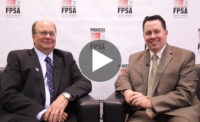The Dangers of Drowsy Driving
David Kolman
Falling asleep at the wheel can be just as dangerous as drinking and driving. Drowsiness can produce the same types of effects as alcohol — slowed reaction time, decreased awareness and impaired judgment, all of which increase the chances of having an accident. While it is common knowledge that it is dangerous to drink and drive, few realize the very real danger of driving drowsy.
In a National Highway Traffic Safety Administration
(NHTSA)/AAA Foundation for Traffic Safety survey among police officers,
nearly 90 percent of the respondents said they had stopped a driver who
they believed was drunk, but who turned out to be drowsy.
Fatigue-related accidents tend to be single-vehicle
crashes in which a vehicle leaves the roadway and then turns over or hits a
fixed object. And as might be expected, research shows that people have a
greater tendency to fall asleep while driving on the long, uninteresting
stretches of road, characteristic of many highways and interstates.
The NHTSA says drowsiness or fatigue is a principal
causal factor in up to 100,000 police-reported crashes annually. These
result in some 71,000 injuries and 1,500 fatalities.
The numbers could be higher, but it is difficult to
attribute crashes to sleepiness because there is no standard test for
drowsiness, as there is for intoxication.
The body has an internal clock, typically referred to
as a biological clock. The scientific term is circadian rhythm, which
influences the hormones that play a role in sleep and wakefulness,
metabolic rate and body temperature. Research shows that while most
people’s internal clocks run on a daily rhythm of approximately 24
hours, individual “body time” varies from person to person. For
example, there are “morning people” — those who feel most
alert early in the day, and there are “night owls” —
those who seem to come alive at night.
Night time is particularly risky for drivers as sleep
can become an irresistible urge, safety experts warn. Most people’s
biological clocks are programmed to sleep when it is dark. The sleep urge
is strongest between 12:00 a.m. and 6:00 a.m., which is when drivers are
especially likely to have sleep-related crashes.
Another sleepy danger time zone, point out safety
experts, is in the middle of the day. Many sleep-related crashes happen
between 1:00 p.m. and 5:00 p.m., a period known as the afternoon lull or
slump. It is this time of day when people feel tired and lethargic, and may
have difficulty staying alert and focused.
To be a safer driver, safety officials suggest that
drivers become aware of their own biological clock. What times of day do
your drivers feel most alert? What times do they feel most drowsy?
Once they are aware of their own personal cycle, the
officials say, drivers can take extra care when they are likely to be
feeling sleepy.
Continuing to drive when drowsy puts a driver —
and others — at serious risk of being involved in a fatigue-related
crash, safety officials stress. The obvious thing to do is to find a safe
spot to stop and get some sleep. Even a power nap — no more than 20
to 30 minutes long — serves to rejuvenate one’s self by
maximizing the benefits of sleep vs. time.
Since stopping for some sleep is not always practical,
here are some suggested countermeasures that safety officials say may be
effective for the short-term:
• Take regular breaks and
get out of the truck. Stretch, do some exercises or walk around a bit
to “get the blood flowing.” This can help a driver feel more
refreshed and invigorated.
• Drink a caffeinated
beverage. Caffeine acts as a stimulant to boost energy temporarily. It
takes about 30 minutes for caffeine to enter the bloodstream. For those
who regularly drink caffeinated beverages, caffeine won’t have
much effect. Drinking too much caffeine at one time can make a person feel nervous or jumpy.
• Avoid medications
— over-the-counter and prescription — that may cause
drowsiness and impair one’s driving abilities. Always read the
label and check with a doctor or pharmacist to be sure.
• Open a window for fresh
air, which can be invigorating.
• Listen to radio
talk shows or loud, annoy-ing music.
Understanding the risks, symptoms and countermeasures
associated with drowsy driving are the keys to avoiding it, emphasize
safety officials. But the bottom line is: the only certain cure for
drowsiness is sleep.
David Kolman is a veteran truck communicator, keynote
speaker and long-haul trucker. Commissioned as an Honorary Colonel on the
Kentucky governor’s staff for his work promoting traffic safety, he
actively participates in trade associations and reports news and
information about the trucking industry for broadcasting and print media.
Sleepiness signs
Being aware of the symptoms associated with drowsy
driving can help drivers stay safe. Among the signs of fatigue and
sleepiness:
• Difficulty remembering
the last few miles driven
• Drifting out of a lane
or onto the shoulder
• Being jarred alert
running over rumble strips
• Finding one’s self
jerking the vehicle back into position
• Abnormal speed,
tailgating or missing traffic signs and signals
• Struggling to keep
one’s eyes open or focused
• Seeing things that
aren’t really there
• Wandering or
disconnected thoughts
• Frequent yawning and eye
rubbing
• Having trouble keeping
one’s head up
• Nodding off
‘Sleepy’
behavior
According to the National Sleep Foundation,
sleepiness or fatigue causes the following:
• Impaired reaction time,
judgment and vision
• Problems with information
processing and short-term memory
• Decreased performance,
vigilance and motivation
• Increased moodiness and
aggressive behaviors
A study by researchers in Australia has shown that
being awake for 18 hours produced impairment equal to a blood alcohol
concentration (BAC) of 0.05 percent, and 0.10 percent after 24 hours. A
BAC of 0.08 percent is considered legally drunk.



